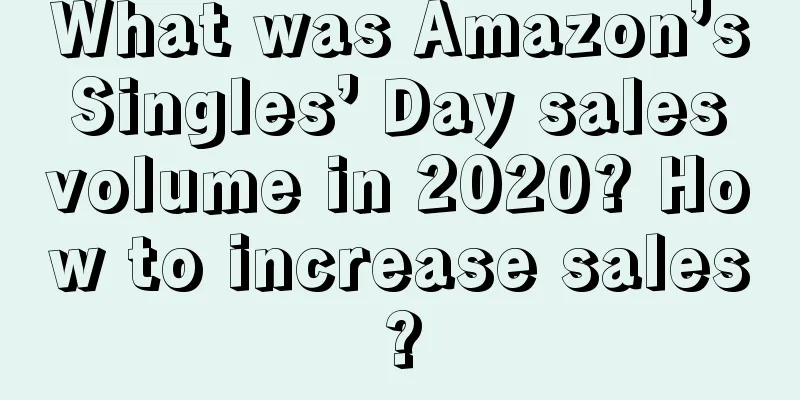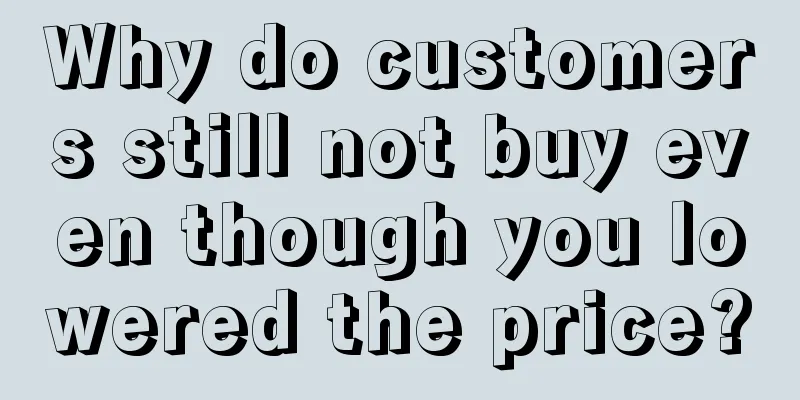Rethinking the “Subscription System”

When I opened the APP, I saw an unpleasant scene, "Membership has expired, please renew in time." Faced with fixed renewals, sometimes I didn't feel anything, and sometimes I couldn't help feeling a little distressed. why is that? A friend said, “I subscribed to a video website because I wanted to watch a certain drama. I thought it would only last for one month, but then I didn’t pay attention. I didn’t expect that I would be charged every month. It was difficult to find the cancellation entrance, and I ended up losing a lot of money.” If you don’t count it, you wouldn’t know. If you count it carefully, subscription services alone may constitute a huge expense every month, among which Internet software accounts for the largest proportion. For example: iQiyi, Youku, Mubu, Polarr, Typota, Ziyou, NetEase Cloud Music, QQ Music, XMind, etc. In addition, some new consumer players have also joined the subscription team, such as flowerplus in the flower track and pet supplies service brand MOLLYBOX Magic Cat Box. "Douyin Supermarket" has recently dominated the hot search list in the consumer Internet circle. Some industry insiders believe that in the near future, Douyin e-commerce will also join the same subscription team as "Tmall and JD." There is no doubt that subscription has long been a general trend, and many bosses are thinking about how to switch to subscription . To be honest, for non-high-frequency products, I am still very uncomfortable with the "subscription system". But I am more concerned about why the subscription system is becoming more and more popular? Why do some people dislike the subscription system like me? What is the essence of the subscription system? Is the long-term "compound interest thinking" of the subscription system valid? 1. Subscription Model and Popularity FactorsIn the super membership system, the subscription system is also called the subscription membership system (Subscription Model). After consumers pay a certain fee at one time, the brand provides services or delivers specific products on a periodic basis. Subscription itself has developed from the most traditional value-added service type to various full-eco models today. According to consumer scenarios, within the membership ecosystem model, subscriptions can be divided into three models: service subscriptions, content subscriptions, and product subscriptions. Service-oriented: the service is free, but you can pay to enjoy more services and privileges. The core of this system lies in whether users can transform from "luxury to frugality, and from frugality to luxury" . Just like: most music products on the market include two subscription models, "paid music package and deluxe green diamond". With the former, you can enjoy listening to some basic paid music, and with the latter, you can not only listen to lossless music, but also download it and have many privileges. Content subscription focuses on "content". A video website with a popular IP drama or a reading platform can experience the updates of a hot novel first than others, and a knowledge platform can try out a series of courses. Just like: the medium and long video platforms "iQIYI", YouTube, NetFlix, and the knowledge payment platforms "Get" and "Fan Deng Reading", which support the entire company's receivables with three models: monthly, quarterly, and annual fees. The product subscription model must meet the characteristics of "easy to consume + high frequency" within a fixed period of time. The core is "paying for experience", and the key driving factors are "novelty" and "creating surprises". Just like: milk brand "milk cards", daily shampoo, supermarket fruit and vegetable packages, pet cat food, etc., consumers tend to repeatedly purchase such products at fixed intervals, greatly reducing more energy on product category selection. Many leading platforms basically integrate three models. Amazon abroad and JD.com and Taobao in China can be said to be the benchmarks in the membership subscription ecosystem. Through fixed annual fees, they cover various logistics, streaming media, shopping, reading privileges, etc., and basically provide free value-added services every year. The convenience of online payment has greatly promoted the development of subscription system, which seems to bring us back to the newspaper era of our childhood, except that compared with the past, the selectivity, intuitiveness and decision-making efficiency have been further improved. The reason why subscription system is becoming more and more popular can be seen from three perspectives: 1. Consumer perspectiveThe essence of business is to improve transaction efficiency. Efficiency means that time costs are compressed. Subscription, in a sense, represents an improvement in service. People are willing to spend more money to enjoy efficiency, and thus use the time they squeeze out to create greater income. Increased income means more disposable capital to support yourself in enjoying higher quality services. for example: I subscribe to mostly content social media, such as Huxiu MiaoTou, Pinwan, and Caijing, which can help me screen high-quality articles and information; video platforms can remove advertisements, and Meituan membership can help me save a lot of takeout costs. But then again, I don’t have membership on every platform now. Generally, one VIP on JD.com and Tmall can include many streaming media, which greatly reduces my management costs for other small platforms. 2. Platform angleFirst of all, from the perspective of input-output effect, the benefits and discounts provided by the platform to users far exceed the users' payment costs. The only drawback is that the platform benefits require users to use them multiple times and consume them in stages. Or the user's orders must reach a certain amount before the deduction can be made. Therefore, the platform's real intention is not to make a few dozen dollars in membership fees, but to screen out high-contribution users. In addition, users' shopping and active behaviors are locked on the platform, thereby enabling the platform to achieve user stratification and targeted operations, further increasing the average order value of some users. Secondly, in terms of the psychological cost of launching the platform, users always feel like they are getting a bargain when they invest money in a platform. It would be a waste if they pay but don’t use it, and it would be a waste if they buy it and don’t use it. In economics, this is called "sunk cost". Facts have proved that it is not easy to always maintain absolutely rational thinking. This mentality of taking advantage and getting discounts, while increasing consumption and giving discounts, is unlikely to be lost on a certain platform. 3. Merchant perspectiveThe subscription system is not just a way to increase the "profit model", it also increases the frequency and habits of consumers using their own products, creates loyal users, and brings potential benefits. When users use e-commerce platforms, the homepage has long been transformed from the shelf mode to the "waterfall flow mode", with content and products integrated. Through the "cultivation" of various preference analyses, it is easy to bring about a chain reaction . For example: If you subscribe to a store’s updates for free on Taobao, then the brand will stand out among dozens of stores in your favorites. Every time the store has new products, the updates may bring in new consumption. Or, you subscribe to an author's "news information" on a certain knowledge payment platform, and by reading the content, you will get to know him better and better. In subsequent developments, the author’s own experiences and the content he distributes will appear in a circle and continue to spread. It is conceivable how much impact 10, 100, or tens of millions of subscribers will have. The platform retains users, and merchants and users achieve a balance in "price and experience", and the two will be able to run parallel for a long time. This is also the main reason for the rapid development of the subscription model. Therefore, in the operation of the entire business machine, the subscription system benefits all three parties, because compared with the traditional marketing model, it is a way to provide high-quality services, maintain user stickiness, and increase secondary consumption. 2. The subscription threshold is difficult to controlAfter a survey in the circle of friends, 4 out of 10 people are disgusted by the subscription system. In principle, everyone benefits, so why are some people still opposed to it? 1. Changes in consumption patternsSubscription first appeared in the software market. When the Internet was not well developed, people were accustomed to the shopping method of paying money and receiving goods. The same is true in the software market. There will be a problem with this model. If you want to purchase new features, you have to buy new CDs. Therefore, developers usually spend a long time polishing a new version. However, soon after it is launched on the market, pirated copies will soon appear, which makes it obvious that the team's effort and benefits are not linked. In other words, there is always a game between the "seller's market and the copyright development market" and it cannot be governed. Thanks to the rapid development of the Internet, when people get used to downloading things from the Internet, software developers began to manage accounts through "activation codes, keys" and other methods to upgrade software. For the maintenance experience, developers generally choose to upgrade small features for free and pay for large features. In this way, the market is fully protected from buyout + copyright and then evolves into paid subscription. As the business develops, some entrepreneurs in other industries have been inspired to directly change this buyout transaction model into a "buyout + subscription" model to increase revenue and even expand more possibilities. Around 2000 in the United States, everything could be subscribed, and luxury goods, socks, clothes, etc. were the peak of subscription e-commerce. In China around 2015, the flower sector alone raised more than 600 million yuan in financing. The changes in the subscription system in less than 10 years have actually laid the foundation for the development of the model, but it does not mean that everyone will accept "subscription". Subscription represents a change in consumers’ imagination of “owning goods”. In the long history of transactions dominated by physical objects, we prefer a sense of control; on the contrary, middle and upper class people know how to embrace future life in a more advanced way. If you don’t believe it, ask the rural people whether they are willing to accept it? Some friends said that commercialization has led to the deformation of the "subscription system". Subscription itself is an increase in service experience, and now it is used by businesses as the main revenue model. Once the emphasis is placed on revenue, other parts such as products will decline. 2. Strengthen loss aversionLoss aversion (KahnemanandTversky) is a cornerstone of the prospect theory developed by Daniel Kahneman and his partner Amos Tversky. They all agreed that people naturally have this mentality, and the pain of losing something far exceeds the happiness of getting it. Unfortunately, the subscription system in the current business ecosystem continues to reinforce the feeling of loss aversion, like a 4-minute and 30-second piece of music that stops abruptly after you listen to it for 40 seconds. How would you feel? Although you may feel refreshed temporarily after paying, many people will calm down when the renewal period comes. Next time you use the service, many functions and benefits will be disabled. This cycle feels like it's been triggered again, and users will feel threatened and as if their freedom is being violated. It seems like they have the illusion that they can't buy happily, or that they can't finish a show halfway through. Various APPs or consumer product subscription systems do not minimize loss aversion. Instead, they take advantage of people's instinct to seek profit and avoid harm, constantly amplify it, and lead to rejection. For example: I often use a fitness software, but I haven't used it during the Spring Festival when I went home. When I wanted to use it again, I found that it had expired. I was not given a chance to buffer for a few days. Instead, the renewal rights and logos written in capital letters on the interface made me extremely disgusted. If we really start from the psychological model, when people want to use the product again, they can suddenly give it away for a few days, and then guide them to pay again after they get back in shape. On the contrary, the aversion to loss will become smaller. Obviously, people need an inner buffer to accept loss aversion. Why? Bandura, the founder of social learning theory, believes that the factors that influence behavior include two aspects. One is the result of the behavior itself, and the other is the expectation of behavioral ability and results formed by self-cognition. In other words, users know that many of their rights and interests cannot be used after expiration, but they need to adapt to this situation. When faced with unused coupons given by merchants (platforms), users feel reluctant, and this reluctance needs to be slowly accepted. Therefore, the correct approach is that the subscription model launched by consumer products or APPs should be transformed from the inherent hunger marketing model to "making friends with users". After the rights expire, users should be properly guided to convert based on their rights or copywriting, which will be more conducive to secondary consumption. This is also the main reason why users reject "long-term paid subscriptions" from a psychological perspective. An excellent subscription model should reduce the degree of loss. 3. Subscription should be considered as a channelMany entrepreneurs understand the subscription system as a means of "direct payment". In my opinion, subscription should be regarded as a channel, a link, which plays a role in value transfer . Why? A channel is a specific passage or path for the transfer of goods and services from producers to consumers (Philip Kotler). Within this channel, it connects consumers on one side and upstream on the other, thereby benefiting from the middle. For example: a bottle of Yuanqi Forest sparkling water has to go through first-level, second-level distributors and terminal retailers before it reaches the user. In the process, the flow of channels is not only about goods, but also about money, ownership, and information . The subscription system links both ends, and we should also understand direct subscriptions under the DTC (Direct To Customer) model in this way, otherwise the value transfer part will be lost. If you don’t believe it, think about it, why do brands continue to subscribe? Getting users to continue paying is one way, and another is trying to find "intermediate subscribers (old customers)" and provide them with more brand information, money, and ownership, thereby influencing more consumers. In other words, subscribers should be treated as Key Opinion Leaders. If users are treated as terminals, some of the "subscription value" will be lost. Just like "Flowerplus", users already know what products it delivers, but they still have to subscribe. Receiving a bouquet of flowers in the office every week may seem to please oneself, but in fact it can also help the brand reach more users. There is a listed company abroad, Chegg, which puts students first. It started as an online website for renting textbooks and aims to provide educational services, tutoring, and develop 44 million students in the United States. How powerful is it? As of 2020, public data shows that it has reached 132 million US dollars, covering nearly 30% of college students in the United States. So, what is the core of subscription? Find opinion leaders who can bring multiple disseminations. For single brands, don’t be fooled by the behavior of the leading platforms (Taobao 88Vip, JD Plus). They are facing a battle for traffic as it peaks, while you are facing the task of finding vertical users who match your brand value and can develop in the long term with the existing traffic. Just like: Leke, which has opened 500 stores in 8 cities across the country in 3 years and serves more than 8 million users, was able to run the subscription model because it found a very vertical group of people with similar interests. Therefore, the paid subscription system has two important and invisible characteristics: 1. You don’t know where your core users areFrom a user's perspective, I believe that you, like me, also subscribe to many websites, but rarely promote them. Otherwise, you would never subscribe for the purpose of watching a movie or doing something else. Instead, some behave differently. A foreign friend of mine is a loyal user of lululemon. Last year, when she learned that the brand launched a home fitness mirror device, she said that by simply subscribing, she could get 10,000 on-demand and live classes on Mirror, which made her happy to promote it everywhere. It can be seen that user interest-driven is the secret to the rapid growth of the subscription system. By finding a group with similar values, the growth efficiency will be increased by more than half. 2. There may be misunderstandings in the subscription methodFrom the merchant's perspective, the previous practice was to adopt a product-centric "subscription model". This unilateral output did not reflect the value of "subscription". Customers enjoyed it passively, and it was unknown whether they liked it or not. They would not give feedback to the brand, and over time, users would be lost. If you don’t believe it, just look at the players of long-form videos on iQiyi, Youku and Tencent Video. Why do a series of behaviors always make people reject them? How does Netflix do it? For those users who have not interacted for a long time and have continued to pay, reminding them to cancel their subscriptions seems difficult to understand. Why give away the money you have earned? Because those non-interactive customers have no channel value, or even only negative value. Joan Margarita, author of "What is Management", believes that creating a new business model is not like writing a story. In a sense, all new stories are actually adjustments and changes to old stories. If you misinterpret the original meaning of old stories, you will inevitably take many detours. Therefore, setting a membership amount, adding a big gift package, and piling up various benefits are not the main purpose of the subscription system. Don't be misled by this phenomenon. 4. Is it possible to make money by subscribing to compound interest?Despite the booming foreign market, there are also many "subscription system" practitioners in China. After analysis, it is believed that at present, if China wants to make money continuously, it cannot reach the state of compound interest. At best, it is a "revenue supplement" . Why? 1. Subscription is a weak relationshipRegardless of whether the consumer product is a DTC (Direct To Customer) model or a platform APP, there are only three types of buyer-seller relationships: no commitment, weak commitment, and strong commitment . From the sales logic , there are no commitments such as polite words like keeping in touch and expressing gratitude. A weak commitment is when you visit the user and the other party gives suggestions for feedback during the next meeting, but the time of the next meeting is another matter. A strong relationship means there is time, a plan, and results. From the operational logic , no commitment means that you pay money and get the goods in return, and at most one after-sales guarantee is provided. A weak commitment means "try for 7 days before paying, deduct money on a per-time basis, deduct money on a monthly basis, cancel at any time, and no deposit required for credit", etc. A strong commitment includes annual fees, deposits, etc. In what kind of relationship would a subscription system be used? The answer is "ambiguous". When a high-frequency product appears in front of you, you have three options: buy it outright and pay the same price next time, continue to subscribe and it will be 10 yuan cheaper than the original price, or pay 1,000 yuan a year and get 20% off each time. How should you choose? Compared with strong commitment, no commitment may lead to churn. The subscription system offers lighter commitment and lower decision-making costs, making it easier for merchants to establish long-term relationships. However, this relationship is exactly in between the two. The reason why it is difficult to grasp is that the middle part of the subscription is goods, information, and money. When the commodity cycle begins to flow, it means that the latter two also begin to flow, and the market is not stagnant, which directly increases the occurrence of various changes. For example: if you continue to subscribe to a certain product and a substitute suddenly appears in the market, the probability of canceling the subscription will increase. Similarly, if a company suddenly uses the power of capital to push a certain product into the market with a transaction model of exchanging money for goods, its peers will be hit. Obviously, there is a wide area between the exchange of money and goods and the "strong commitment" prepayment system, but it is difficult to continuously grasp the development possibilities; because commodities, information, and ownership are all variable relationships in the market. 2. Consumers continue to changeAccording to the saying that it takes 21 days to form a habit, how hard do you think it is to stick to something? Or what is the thing you stick to the longest? The subscription system is the same, it is easy to start but difficult to last. The reasons why users subscribe in advance are nothing more than "trust and demand for products (information)". First, successful explorers tell us that as users’ ability to acquire information becomes increasingly advanced and as consumer options become more numerous, it becomes increasingly difficult to establish trust in products. The product life cycle continues to shorten, further accelerating the pace of updates and replacements for best-selling products . Subscriptions may seem satisfying in the early stages, but once the novelty wears off, users will quickly abandon them. Secondly, people’s growth and consumption structure change differently. Lifestyles, knowledge needs, and emotional values will continue to adjust with age. Something you liked yesterday may seem outdated if you see a new style today. Subscription is buying the future, and even for essential products, people get tired of them eventually. Furthermore, for any product linked to consumption (including software), profit, quality and scale can never be guaranteed at the same time. Once the profit becomes thin, the sense of value will naturally decline, and an increase in scale means affecting product quality. Admittedly, subscription is a cyclical business, and its success as a main revenue model is a probabilistic game. As one round of users exits, a new round of users comes in, and there is always a transition between no commitment and strong commitment: "value and information." In summary: The subscription system may seem like a carnival, but it is actually lonely. The business model focuses on how to make money, and the subscription system focuses on how to "continue to make money from users" . If you want users to continue to pay, the story is difficult and may require a group of capital to create. Author: Wang Zhiyuan, public account: Wang Zhiyuan |
Recommend
Can I ship items I bought from eBay in the US back to China? How can I ship items I bought from eBay to China?
eBay is a relatively well-developed cross-border e...
eBay UK adds new features to Advanced Promoted Listings beta
eBay UK announced that it has developed new featur...
Can I register a Lazada P card as an individual? Can I use it?
There are two ways to receive payment at Lazada. T...
Six questions for the brand’s first offline store: Are you prepared for three years of no profit?
...
How should marketers properly utilize ChatGPT?
ChatGPT's capabilities have been widely recogn...
These three brands told me: Don’t compare yourself to others, it’s just a collaboration | Anti-anxiety special
In this age of social media, we are always tempted...
Zhang Yiming no longer competes with Huang Zheng for the title of King of White Cards
As competition among e-commerce platforms intensif...
The conversion rate of sales notes is low. How to break the deadlock?
For small and medium-sized brands, the low convers...
What is the difficulty in marketing functional products?
The marketing of many functional products is diffi...
Is cross-border e-commerce in Africa easy to do? What is it suitable for?
There are many people engaged in the cross-border ...
How do I check my account restrictions on Amazon? Why is my account locked?
If you open a store on Amazon and your account is ...
How can a new Shopee store gain traffic? Is there any method?
Now, more and more merchants are opening stores on...
How to choose store products when placing advertisements on Shopee?
Choosing suitable products for advertising can max...
How to earn 30% more by "serving dishes to different people"? The logic behind the huge profits of user profile income stratification
As e-commerce competition becomes increasingly fie...
Who is helping the skits “hunt” the elderly?
The main audience of skits has gradually become th...









